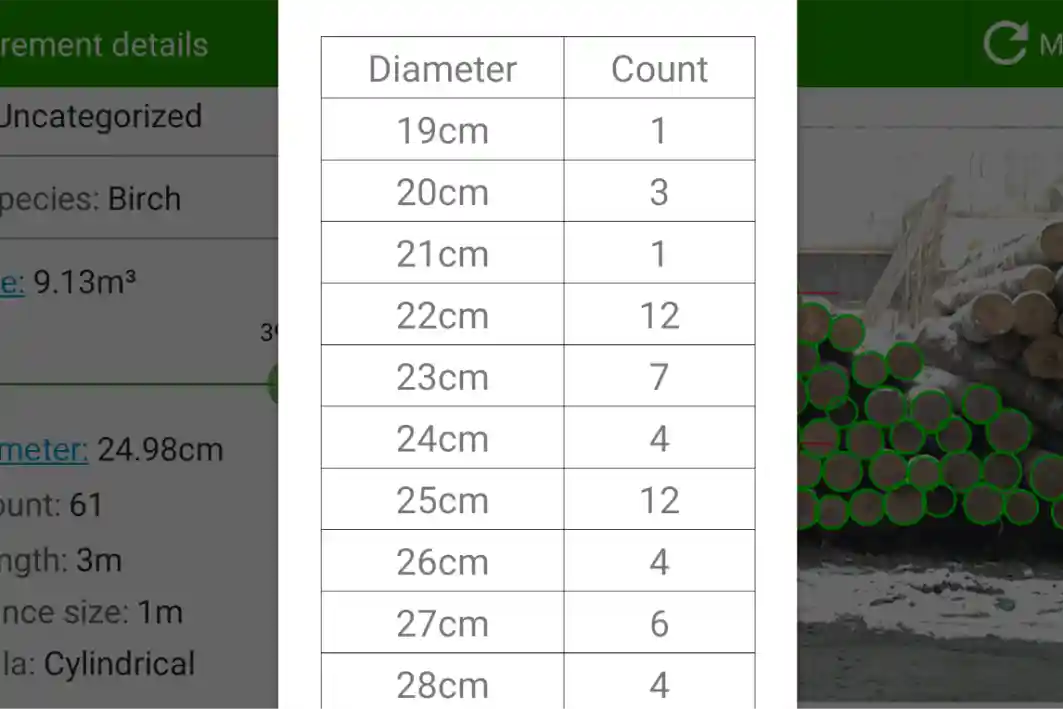Our team is always ready to help when it comes to offering a free trial version of Timbeter to companies who are interested on testing Timbeter solution in all different conditions and cases.
Very often, Timbeter results are compared to manual measurements, since companies mostly rely only on the manual measurements. The easiest comparison comes to the total amount of logs in a pile, but when it comes to diameter and volume comparison, it turns out to be a little bit more complicated. Since devil is always in the details, we will explain here which are the most typical questions our team needs to answer regarding measurement comparisons.
First of all, it is important to understand how Timbeter “makes” a measurement.
Timbeter detects the contour area of a log under the bark and converts this area to a symmetrical circle; from where the average diameter is calculated. The average diameter of a log is calculated based on the total area of the it.
The process is designed to measure the log surface area as accurately as possible, by converting the irregular shape of the contour area into a perfect circular image. For a regular diameter measurement, more than 2,000 points per one log counter are detected.
Here, you can find a picture what illustrates how Timbeter detection process works.
When an individual is measuring a log with irregular shape manually, usually two perpendicular diameters are measured and the average diameter is then calculated.
In some cases, however, the individual only measures the narrowest diameter possible. Whenever the human factor is involved, there’s always a risk of subjectivity. It is time-consuming to control and moreover, hard to argue whenever you might have a disagreement.
In comparison to an individual measuring logs manually, Timbeter measures always objectively and the same way, since the detection is based on machine learning and artificial intelligence, so the results are not dependent on the measurer. It’s also a fact that some devices give better detection results (a camera with resolution of 8 megapixels is our minimum requirement), but the detection process works always the same way.
The diameter measurement is also an important input for volume calculation. When using Timbeter, please mind that each formula utilizes its own rounding rules. We have written about these rules here. This means that, in case of JAS, for example, 25,9 cm is rounded down to the nearest integer – 24 cm. However, by using the Cylindrical formula, 25,9cm is rounded to 26cm.
It has occured that sometimes we get the feedback from a potential client and find out that there are differences on how the rounding was done or then there’s some other formula for volume calculation being used, making the comparison not viable. With Timbeter, all diameters are always measured and rounded in the same way, avoiding mistakes and data duplication.
You are interested in testing out Timbeter? Get in touch with us at info@timbeter.com or clicking here.
